|
 Secure Site
Secure Site
|
 |
 share your yoga practice with your children One way you can introduce yoga to your children is through a regular kids’ yoga class. But if one doesn’t fit in your family’s schedule, or the right teacher hasn’t appeared, no worries. To offer your kids a meaningful experience of yoga, all you have to do is make it a part of your home life.
Kate Holcombe, founder and president of the Healing Yoga Foundation in San Francisco, met her teacher, T.K.V. Desikachar, when she was 19. During her many years of study with him in Chennai, India, she noticed that the legendary yogi didn’t practice behind closed doors; he practiced out in the open, with his family.
So when Holcombe had her own children, she followed her teacher’s adage: “Yoga is for the living room, not the yoga room.” She invites her oldest sons (Calder, 8, and Hayes, 5) to use her body as a playground while she’s practicing asana. “They love doing my stretches with me,” she says. “When I’m in Downward Dog, they race underneath me as many times as they can before I move into Upward Dog. While I’m on my back with my legs in the air, they jump up and fly like an airplane on my feet.” Holcombe has taught Calder to do Sun Salutations, and he and Hayes like to imitate postures by her side. Sometimes, at night, when she does her asana routine in their bedroom, they watch her in the shadows and listen to the sound of her breathing as they fall asleep. Her advice for parents? “Rather than compartmentalizing ‘yoga time’ and ‘family time,’ be flexible,” she says. “Adapt your practice to your lifestyle and your children’s needs.” Her sons know that they can join their mom for postures and chanting when they’re in the mood, but it’s never required.
As you create your home routine, says Pandit Rajmani Tigunait, the spiritual head of the Himalayan Institute in Honesdale, Pennsylvania, and a longtime student of Swami Rama, it’s important to teach only what you practice. If you love vinyasa classes, show your children flowing sequences that are coordinated with the breath. If you sit for long periods of meditation, invite your child to crawl onto your lap for as long as she’s comfortable being still. If you have an altar, let your child pick flowers or draw pictures to place on it. “Let your children see that your practice makes you happy,” he says, “and let them follow you.”
With positive role modeling and regular firsthand experience, he says, your kids will begin to see that yoga—in all its myriad forms—is good for their health, happiness, and spiritual development. And as they mature, they may be inspired to study in a more structured manner.
adapted from Yoga Journal by By Shannon Sexton
 Meditation and Yoga timers and tools Now & Zen
1638 Pearl Street
Boulder, CO 80302
(800) 779-6383
Posted in yoga, Yoga Timer, Yoga Timers by Now & Zen
 Hugging Meditation At a recent lecture, I led a group of interfaith seminarians in the contemplation of the Five Remembrances, Buddha’s teaching on impermanence, aging, health, change, and death. Afterward, one of the students asked, “Isn’t this just negative thinking?” On the contrary, the Five Remembrances is what the Buddha offers to awaken you from denial, to cultivate gratitude and appreciation for the life you’ve been given, and to teach you about nonattachment and equanimity.
Another way of practicing the Five Remembrances is through something Buddhist master Thich Nhat Hanh calls hugging meditation. When your partner or children leave for work or school, hug each other for three full breaths, and remind yourself of the Fourth Remembrance: “All that is dear to me and everyone I love are of the nature to change. There is no way to escape being separated from them.” If you’re having a disagreement with someone, remind yourself, before getting swept away by heated emotions, of the Fifth Remembrance: “My actions are my only true belongings. I cannot escape the consequences of my actions. My actions are the ground upon which I stand.” None of this means you should be passive or reluctant to advocate your views. Instead the meditation helps you respond more skillfully with awareness of how things truly are rather than from conditioned reactions.
adapted from Yoga Journal by Frank Jude Boccio
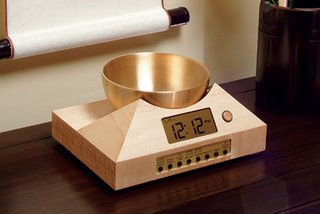 tibetan bowl alarm clocks and timers for meditation and yoga
Now & Zen
1638 Pearl Street
Boulder, CO 80302
(800) 779-6383
Posted in yoga, Yoga Timer, Yoga Timers by Now & Zen
 meditation for children Our students in the post-pubertal stage of adolescence can engage in more classical forms of meditation. We can teach them techniques that further support their mental development, for example, so that they can stay relaxed and able to concentrate during these most important learning years.
Again, one of the best practices to teach is yoga nidra. This time we can use the adult form, rotating the awareness through the body parts and then taking awareness deeper into the breath and mind.
Visualization techniques are wonderful for this age group, and techniques that develop memory and mental power are particularly useful. For example, we can ask a child to visualize an imaginary blackboard and ask them to see themselves writing the letters of the alphabet on this board in colored chalk. Or in this day and age, to visualize a computer screen and see themselves creating their own computer game, following their hero through any story they want to create.
Breath meditations are useful for helping students who are at home studying. It is important for students to remain relaxed and receptive, and to take regular productive and relaxing breaks from study. They can, if they wish, use that time to mentally review their work.
By Swami Shankardev Saraswati, Ph.D
 meditation timers and alarm clocks with chimes
Now & Zen
1638 Pearl Street
Boulder, CO 80302
(800) 779-6383
Posted in yoga, Yoga Timer, Yoga Timers by Now & Zen
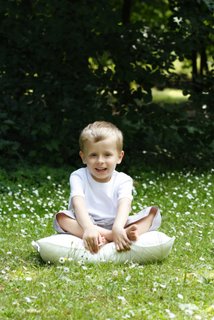 meditation for children By the age of eight, a child’s fundamental personality has formed and his or her body begins a process of preparing for puberty. Changes begin to occur in children’s brains around the age of eight, and these changes reach a peak during puberty. When we teach meditation to this age group, our main aim is to support balanced physical and mental development. This helps the child be better mentally prepared for the onslaught of feelings, desires, and urges that arise during puberty. It also supports the child’s ability to take in knowledge at school, and to develop a relaxed focus and good memory.
Eight-year-olds in India learn three practices to foster total physical, mental, and spiritual development. These are Sun Salutation for the body, alternate nostril breathing for the brain and mind, and mantras for the deeper mind and spirit. These practices can slow the onset of puberty and balance its effects by acting on the subtle channels that flow in the spine. Mental development then has time to catch up to physical changes.
Yogic physiology explains how this occurs. A child’s physical changes during puberty are under the control of pingala nadi, the spinal channel that carries prana, the life force. Mental development occurs under the control of ida nadi, the spinal channel that carries psychological force. Excessive stimulation of the physical channel alone, as tends to occur in the normal social environment, causes imbalanced development and can make puberty a rough process. The yogic practices taught children at this time stimulate both channels equally, to stimulate physical and mental growth at the same time.
The practice of Sun Salutation balances the life force, prana, preventing it from becoming jammed up in the sexual centers (swadhisthana chakra). One note of caution is to teach children only asanas that are playful and that do not put too much pressure on the endocrine system. Never hold the major poses for extended periods, as they will overstimulate the physical systems and can cause imbalanced development.
Alternate nostril breathing is a pre-meditative practice that balances the flow of energy in both ida and pingala. This pranayama directly affects the physical and mental systems by balancing both sides of the brain. Do not teach breath retention to children. Simply get them to observe the flow of the breath in on one side and out on the other, alternating sides. This will calm and balance them.
Mantras are the main meditative practices taught to this age group, as they powerfully affect the brain and its development. The main mantra taught is the Gayatri mantra. This mantra has 24 syllables, each of which stimulates a different part of the brain. Gayatri is the mantra to stimulate our intelligence.
All of the practices listed above, including yoga nidra as detailed for younger children, will support a child’s ability to learn, to take in and digest information at school, and to develop individual interests.
adapted from Yoga Journal by Swami Shankardev Saraswati, Ph.D.
 Maple Meditation Timer with Chime Now & Zen
1638 Pearl Street
Boulder, CO 80302
(800) 779-6383
Posted in yoga, Yoga Timer, Yoga Timers by Now & Zen
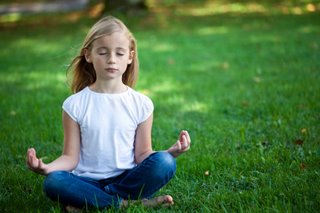 teaching meditation to children From the point of view of yogic physiology, children below age eight do not need much formal meditation training. It is more important for these children that their parents learn yoga and meditation and carry yogic principles into their homes. Children absorb the energy of the environment. If their parents practice some form of self-development, their children will grow up in a healthier, more relaxed and aware environment.
Parents need to practice meditation techniques that increase their own capacity for awareness in the midst of their busy lives, so that they can be more present and available to their children. The child needs to know that a parent is really interested in them, is really listening to and attending to them. At the same time, parents need to learn how to allow children to be themselves and to foster each child’s own unique being and abilities.
One meditation technique can be used with children in this age group, however. A modified practice of yoga nidra is a deep relaxation practice in the Corpse Pose (Savasana). In this practice we cannot ask the children to feel individual parts of the body, but rather we work with awareness of larger parts. For example, we may playfully instruct the child in body awareness by saying, “Feel that you are a statute until I count to 10. Now bend your elbows and now straighten your arms.” We give similar instructions with the legs and may ask them to wiggle their toes, and so on. This takes their awareness through the body.
Once children have developed a little body awareness, we can teach them to listen to and follow outside sounds, or to visualize imaginary realms, or we can read stories that stimulate their imaginations.
adapted from Yoga Journal, by Swami Shankardev Saraswati, Ph.D
Use our unique “Zen Clock” which functions as a Yoga Timer. It features a long-resonating acoustic chime that brings your meditation or yoga session to a gradual close, preserving the environment of stillness while also acting as an effective time signal. Our Yoga Timer & Clock can be programmed to chime at the end of the meditation or yoga session or periodically throughout the session as a kind of sonic yantra. The beauty and functionality of the Zen Clock/Timer makes it a meditation tool that can actually help you “make time” for meditation in your life. Bring yourself back to balance.
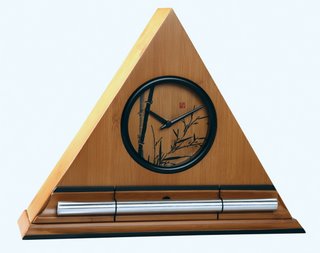 yoga & meditation supplies, timers and clocks Now & Zen – The Yoga Timer Store
1638 Pearl Street
Boulder, CO 80302
(800) 779-6383
Posted in yoga, Yoga Timer, Yoga Timers by Now & Zen
 teaching meditation to kids When we teach meditation to children, we need to choose age-appropriate techniques that foster their total growth and development. The word “meditation” is an English term for a wide range of practices and techniques. Meditations for children cannot be the same as those taught to middle-aged business people or spiritual aspirants seeking higher knowledge. Rather, in this context, meditation is a process that supports the growth of the body-mind of the child, fosters the development of each child’s own unique personality, and supports creativity and expression.
Meditation techniques for children can help them relax and focus better during school, so that they can concentrate and memorize more effectively. From the spiritual perspective, good meditation techniques teach children self-awareness, encourage them to be themselves, and help them face life with greater belief in their potential.
adapted from Yoga Journal by Swami Shankardev Saraswati, Ph.D
 meditation supplies, timers and clocks Now & Zen
1638 Pearl Street
Boulder, CO 80302
(800) 779-6383
Posted in yoga, Yoga Timer, Yoga Timers by Now & Zen
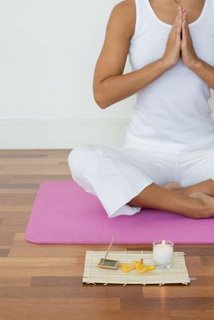 yoga Whether yoga is studied as a method for preventing or treating disease, as a way of coping with difficult-to-treat or chronic illnesses, or as a way of altering the energy state of the body, it’s important to remember that yoga is a way of living and not an isolated technique, say the experts. “While many doctors and patients demand proof that yoga really can help certain medical conditions, they risk overlooking yoga’s far-reaching benefits,” says Elliott S. Dacher, M.D., author of Whole Healing: A Step-b\y-Step Program to Reclaim Your Power to Heal (Plume, 1997). “Yoga is a way to get to the source of ourselves. The challenge is not to see yoga as a treatment for disease, but as an opportunity to see something deeper in the self. To reconnect with the body is one way of artfully facing the reality of pain in our life and a means for accepting and being with our lives more deeply,” he adds. As researchers build a body of studies and trials confirming what yoga practitioners know so well, then, it may still come down to being in and with our bodies in ways too profound to measure.
adapted from Yoga Journal by Elaine Lipson
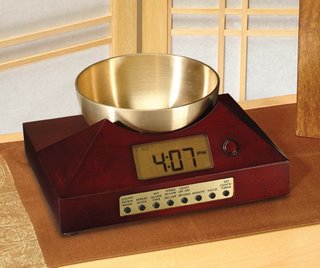 yoga and meditation timers with chimes and gongs Now & Zen
1638 Pearl Street
Boulder, CO 80302
(800) 779-6383
Posted in Yoga Timer, Yoga Timers by Now & Zen
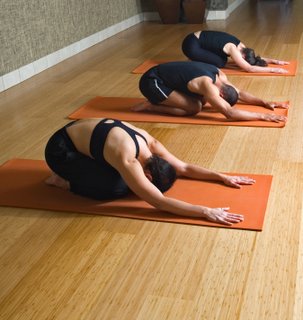 yoga A clinical trial by the Yoga Research Institute in Hyderabad, India, followed the effects of intensive yoga training on physiological changes in six healthy adult females. Though the study group was small, the intensive yoga training resulted in participants’ ability to exercise more comfortably, with a significantly lower heart rate, and with increased breathing efficiency, according to an abstract published in the Journal of Alternative and Complementary Medicine in 1997.
adapted from Yoga Journal by Elaine Lipson
Use our unique “Zen Clock” which functions as a Yoga Timer. It features a long-resonating acoustic chime that brings your meditation or yoga session to a gradual close, preserving the environment of stillness while also acting as an effective time signal. Our Yoga Timer & Clock can be programmed to chime at the end of the meditation or yoga session or periodically throughout the session as a kind of sonic yantra. The beauty and functionality of the Zen Clock/Timer makes it a meditation tool that can actually help you “make time” for meditation in your life. Bring yourself back to balance.
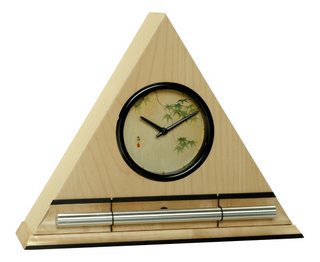 yoga timers and alarm clocks with acoustic chimes Now & Zen – The Yoga Timer Store
1638 Pearl Street
Boulder, CO 80302
(800) 779-6383
Posted in yoga, Yoga Timer, Yoga Timers by Now & Zen
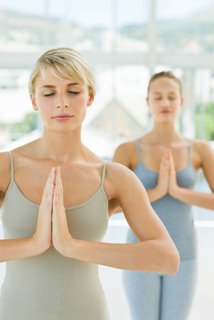 yoga benefits Scientists and medical doctors pursuing yoga-related research are focusing on its ability to help prevent, heal, or alleviate specific conditions, such as heart disease, high blood pressure, carpal tunnel syndrome, asthma, diabetes, and symptoms of menopause, and its benefits as a technique for relieving stress and coping with chronic conditions or disabilities. In fact, the NCCAM itself, identifying yoga as a therapy worth pursuing in the research arena, says that, “During the past 80 years, health professionals in India and the West have begun to investigate the therapeutic potential of yoga. To date, thousands of research studies have been undertaken and have shown that with the practice of yoga a person can, indeed, learn to control such physiologic parameters as blood pressure, heart rate, respiratory function, metabolic rate, skin resistance, brain waves, body temperature, and many other bodily functions.” Though it’s difficult to find most of these studies, some current, accessible research reports significant results for challenging medical conditions:
Asthma. At the Northern Colorado Allergy Asthma Clinic in Fort Collins, a controlled clinical study of university students (19 to 52 years old) with asthma concluded that yoga techniques seem beneficial as an adjunct to the medical management of asthma, according to the 1998 published abstract. Using a set of asanas, pranayama, and meditation, the yoga group practiced three times a week for 16 weeks. Though pulmonary functions did not show a significant variance between yoga and control groups, “analysis of the data showed that the subjects in the yoga group reported a significant degree of relaxation, positive attitude, and better yoga exercise tolerance. There was also a tendency toward lesser usage of beta adrenergic inhalers.”
Cardiovascular Risk Factors. A three-month residential study treating patients with yoga, meditation, and a vegetarian diet at Hanover Medical University in Germany found a substantial reduction in risk factors for heart disease (including blood pressure and cholesterol) in participants, according to an abstract published in Acta physiologica Scandinavica Supplementum in 1997.
Carpal Tunnel Syndrome. A randomized, single-blind, controlled clinical trial at the University of Pennsylvania School of Medicine in Philadelphia concluded, “In this preliminary study, a yoga-based regimen was more effective than wrist splinting or no treatment in relieving some symptoms and signs of carpal tunnel syndrome.” The study, published in the Journal of the American Medical Association in 1998, also noted that “Subjects in the yoga groups had significant improvement in grip strength and pain reduction, but changes in grip strength and pain were not significant for control subjects.”
Arthritis. Also at the University of Pennsylvania School of Medicine, a yoga-treated group with osteoarthritis of the hands improved significantly more than the control group in “pain during activity, tenderness, and finger range of motion.” The randomized controlled clinical trial, published in the Journal of Rheumatology in 1994, concluded, “This yoga-derived program was effective in providing relief in hand osteoarthritis. Further studies are needed to compare this with other treatments and to examine long-term effects.”
adapted from Yoga Journal by Elaine Lipson
 Alarm Clocks and Timers with Gentle Chimes
Now & Zen
1638 Pearl Street
Boulder, CO 80302
(800) 779-6383
Posted in yoga, Yoga Timer, Yoga Timers by Now & Zen
 be of service Commit to one selfless act each week. You’ll be surprised at how even a simple act like offering your seat on a crowded bus can foster a sense of connection and a respect for the welfare of others. Bring a meal to a busy friend; babysit your neighbors’ kids; give a few hours to a community garden. These moments are a chance to share someone else;s experience of the world and see the richness of your own existence. “All yoga begins with karma yoga, which is action done as a service to others and as a form of worship of the divine,” writes David Frawley in Yoga: The Greater Tradition.
adapted from Yoga Journal by Charity Ferreira
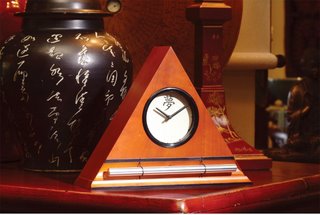 zen clocks and meditation timers
Now & Zen
1638 Pearl Street
Boulder, CO 80302
(800) 779-6383
Posted in yoga, Yoga Timer, Yoga Timers by Now & Zen
|
|
|
|